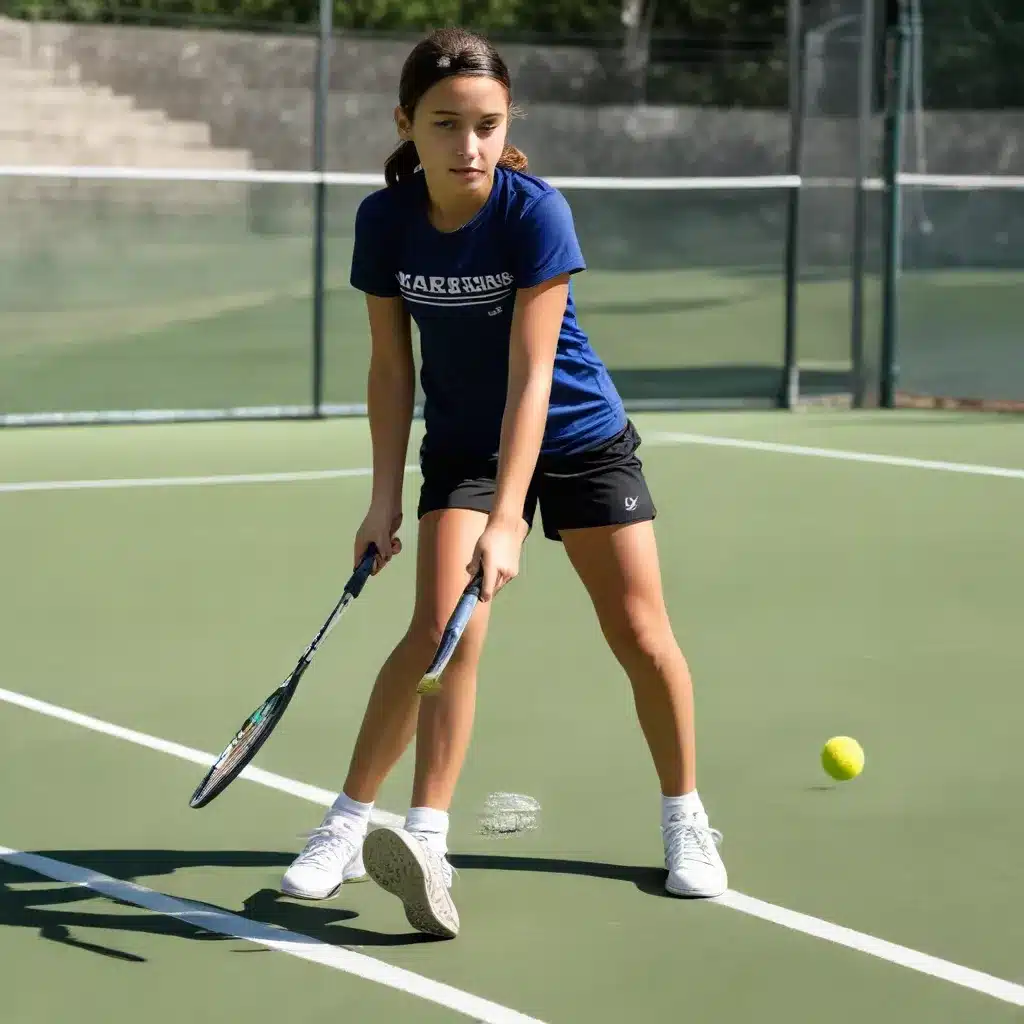
Navigating the Regulatory Landscape
Tennis has long been a beloved sport in the bustling city of London, with a thriving community of passionate players, coaches, and enthusiasts. As the sport continues to evolve, it’s crucial for youth tennis programs in London to stay up-to-date with the latest regulations and best practices to ensure the safety and development of young players.
In the UK, the Lawn Tennis Association (LTA) serves as the governing body for the sport, providing a comprehensive framework for tennis clubs and coaches to operate within. All youth tennis programs in London must adhere to the LTA’s guidelines, which cover a range of areas, including player welfare, coaching qualifications, and court safety standards.
One of the key regulations stipulates that all coaches working with young players must hold a valid LTA coaching qualification. This ensures that coaches have the necessary knowledge and skills to provide effective and age-appropriate instruction, with a focus on developing fundamental techniques while prioritizing the safety and enjoyment of the sport. To comply with these regulations, many youth tennis programs in London partner with LTA-accredited coaches to deliver their training sessions.
LTA’s guidelines for youth tennis programs
Mastering the Fundamentals: Groundstroke Technique
At the heart of any successful youth tennis program lies a strong emphasis on developing proper groundstroke technique. This foundational skill not only lays the groundwork for future success but also helps young players build confidence and a love for the game.
In London, youth tennis programs often use a progressive approach to teaching groundstroke technique, catering to players of different age groups and skill levels. The focus is on developing a solid foundation in areas such as grip, stance, and swing path, gradually progressing to more advanced concepts like spin and shot placement.
Red Ball (Ages 5-8):
Young players in this age group typically use lightweight, oversized tennis balls and smaller court dimensions to help them develop the necessary hand-eye coordination and footwork skills. Coaches place a strong emphasis on establishing a proper grip, maintaining a balanced stance, and executing basic forehand and backhand strokes.
Orange Ball (Ages 9-10):
As players progress, the focus shifts to refining their groundstroke technique. Coaches work with players to optimize their swing patterns, improve consistency, and introduce more advanced concepts like spin and depth control. The use of orange balls, which are slightly larger and heavier than red balls, helps players adjust to the increased ball speed and develop a better understanding of court positioning.
Green Ball (Ages 10-12):
In this stage, players are introduced to the full-sized tennis court and standard yellow balls. Coaches concentrate on enhancing stroke development, tactical awareness, and match play fundamentals. Players learn to incorporate spin, anticipate their opponent’s shots, and execute more sophisticated shot selection strategies.
Yellow Ball (Ages 12 and Older):
For the most advanced youth players, the focus shifts to refining their groundstroke technique, incorporating advanced tactics, and preparing them for competitive play. Coaches work with players to master the use of spin, optimize shot placement, and develop the mental resilience required for tournament-level competition.
Throughout each stage, coaches emphasize the importance of consistent, high-quality repetitions, both during structured training sessions and independent practice. By reinforcing proper technique through drills and match-play scenarios, young players in London can develop the muscle memory and court awareness necessary to excel in the sport.
The Role of Technology in Player Development
In recent years, the tennis industry in London has witnessed a surge in technological advancements that are revolutionizing the way young players train and improve their groundstroke technique.
One such innovation is the use of high-speed cameras and motion analysis software. These tools allow coaches to provide detailed, data-driven feedback to players, helping them identify areas for improvement in their swing mechanics and shot execution. By analyzing frame-by-frame footage, players can better understand the subtle nuances of their technique and make targeted adjustments to achieve optimal performance.
Additionally, the emergence of interactive training apps and virtual coaching platforms has made it easier for young players in London to access personalized feedback and drill-based practice sessions, even outside of their scheduled training times. These digital tools provide customized feedback on stroke mechanics, tactical decision-making, and overall court positioning, empowering players to take a more active role in their own development.
Discover the latest advancements in tennis technology for player development
Budgeting for Groundstroke Training in London
Investing in high-quality groundstroke training is paramount for young players in London, as it lays the foundation for long-term success and enjoyment of the sport. However, the cost of these programs can vary significantly, and it’s essential for families to understand the financial considerations.
Group Lessons:
Many youth tennis programs in London offer group lessons, which can be a cost-effective option for families. Prices for these sessions typically range from £20 to £40 per hour, depending on the location, coach-to-student ratio, and the level of instruction provided.
Private Lessons:
For players seeking more personalized attention, private lessons with an LTA-accredited coach can be a valuable investment. These sessions generally cost between £50 and £100 per hour, with the higher end of the range reserved for coaches with extensive experience and a proven track record of developing elite-level players.
Equipment Costs:
In addition to the training fees, families should factor in the cost of tennis equipment, such as rackets, balls, and appropriate attire. A good-quality youth tennis racket can range from £50 to £150, while a box of tennis balls typically costs around £5 to £10.
To maximize the value of their investment, families in London may consider exploring scholarship programs, equipment donation initiatives, or community-based financial assistance opportunities that can help offset the costs of groundstroke training and equipment.
By understanding the regulatory landscape, mastering the fundamentals of groundstroke technique, and leveraging the latest technological advancements, young tennis players in London can embark on a path of continuous improvement and enjoyment of the sport.

